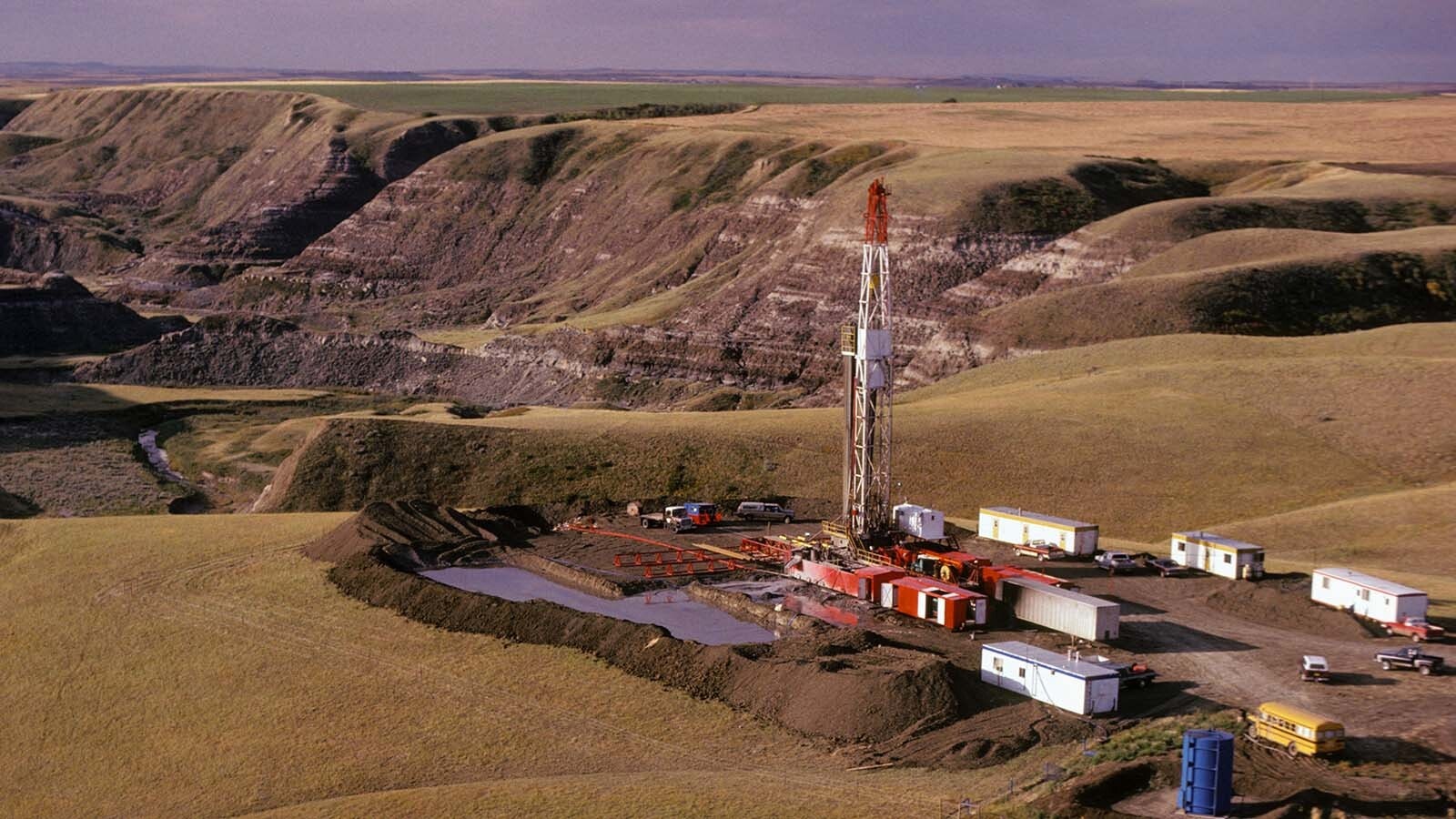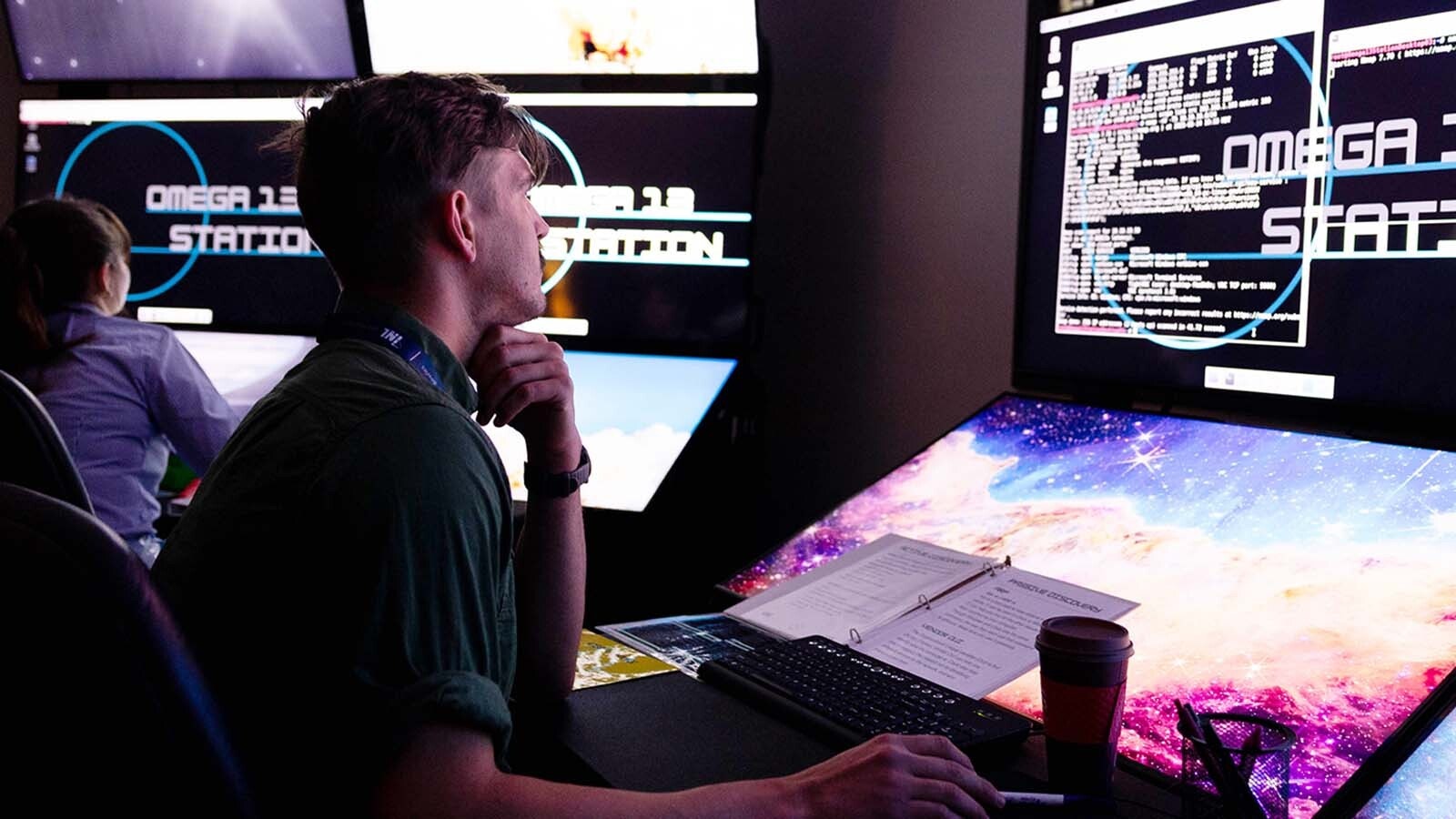This week Wyoming faced dangerous winter weather with record-breaking cold, which caused some Cowboy State residents to lose power.
There’s another kind of bad weather that could cause far more extensive power outages than cold snaps — bad space weather.
Space Weather?
Coronal mass ejections, as they’re called, are large releases of plasma and magnetic fields from the outermost part of the sun’s atmosphere.
These events are often referred to as solar flares, but the relationship between coronal mass ejections and flares is not fully established.
Dr. Chip Kobulnicky, professor in the University of Wyoming Department of Physics and Astronomy, explained that these solar events expel charged protons and electrons. If that ejection is pointed at Earth, it can cause huge disruptions to satellites, electronics on the ground and the electrical grid.
“Historically, we know that this has happened,” Kobulnicky said. “There have been power outages in recent years, usually in northern latitudes. But if the solar storm or the coronal mass ejection is strong enough, it can even reach southern latitudes.”

Big Awakening
One such event happened in March 1989. The public utility Hydro-Québec went down, leaving the entire province of Québec, Canada, without power for nine hours. Parts of the grid in the United States also went offline as a result of the event.
The solar storm raged for about 30 hours, but it took less than 15 minutes to knock out power across grids. Satellite communications were disrupted, as were shortwave radio communications. Over the course of the event, electric currents were detected in the ground.
“That was really a big awakening about the threat that solar flares have on the power system,” said Bob Arritt, technical executive for grid operations and planning at Electric Power Research Institute (EPRI), an independent nonprofit energy research and development organization.
Almost Triggered Nuclear War
Utilities call these solar events geomagnetic disturbances (GND), and they can cause more problems than just blackouts.
In May 1967, a GND knocked out three of the U.S. ballistic missile early warning radars in high latitudes. At the height of the Cold War, the event set off a dangerous chain of events.
According to Sky&Telescope, an amateur astronomy site, the U.S. Air Force, fearing the Soviet Union was jamming the radar system, authorized aircraft with nuclear-strike capabilities to begin flight operations.
Fortunately, space-weather forecasters were able to alert the military that solar flares were the likely culprit, and thus a nuclear war with Russia was averted.
Carrington Event
In August 1859, the most intense GND in recorded history occurred. Named after a British astronomer who observed and recorded the event, it became known as the Carrington Event.
The aurora borealis is the result of charged particles hitting the Earth’s atmosphere. It’s usually seen in northern latitudes, but the Carrington Event caused auroras to be seen as far south as the Caribbean.
At the time, there was little electrical infrastructure except for telegraphs, but it was the first time that people observed what’s called geomagnetically induced current (GIC).
Telegraphs all over Europe and North America failed, and some operators reported receiving electric shocks when they tried to use their telegraph equipment. Sparks flew from telegraph poles. Some operators disconnected their systems from power supplies and were able to continue sending and receiving messages with no electricity except that from the GIC.
Arritt said there’s still a lot of debate about the strength of that storm, but using what observation data is available on the Carrington Event, scientists are able to give utilities some idea of how such a 100-year event would play out in the modern world.
“We in the power industry feel confident where we are as far as advancements that we’ve made in preparing for these large stones. But it’s a threat that we take very seriously,” Arritt said.
Truly Mammoth
Kobulnicky said that analyses of ice samples and tree rings shows that “truly mammoth” solar events happen with regularity through the centuries going back 1,000 years.
“These events are evidently happening every few hundred years. We could get one that’s directed at the Earth,” Kobulnicky said.
When protons and electrons interact with the Earth’s magnetic field, Kobulnicky explained, large electrical current can flow through power lines.
During the time of the Carrington Event, the loss of telegraph was mostly an inconvenience. People today are much more dependent on the electric grid for their basic needs. If there were extensive outages lasting long periods, food and clean water supplies would be threatened.
If the event knocked out satellites, air travel would be severely disrupted. Phones and the internet could be disabled. Not only would basic services possibly be taken off-line, the normal channels of news and information would be inaccessible for many people.
Such an extensive disruption in energy, though, would require a GIC that fries infrastructure — improbable but not impossible.
Unpredictable
As the Arctic blast has approached Wyoming this week, people were well informed and notified of the coming event.
Wyomingites had plenty of time to stock up on supplies in case of power and transportation disruptions. Predicting bad space weather is a lot more difficult.
“We just can’t predict them. So anywhere from every few years, or every few decades, there might be a storm that’s significant enough to impact power grids and satellites,” Kobulnicky said.
While these storms don’t travel at the speed of light, which would give us about eight minutes to prepare, astronomy observers can possibly give a few hours’ notice. This might give grid operators time to adjust to protect infrastructure.
Arritt said that organizations like the North American Electric Reliability Corp. are doing GND vulnerability assessments and developing guidelines for power companies and utilities to respond to warnings of approaching space storms.
There Are Vulnerabilities
He points out that there have been some space storms in the past 30 years — nothing quite like the Carrington Event, but enough to see how electrical infrastructure responds — and we haven’t had any large outages as a result.
Utilities are better prepared than ever for something like the Carrington Event, Arritt said.
“We’ve done the planning. We can alert the operations to taking the defensive posture to be able to prepare for that storm,” Arritt said.
However, Arritt said, ERPI continues to do research because there’s a lot we don’t know.
“We’ve come a long way since the 1989 event, but it’s still something that we take very seriously,” Arritt said.





